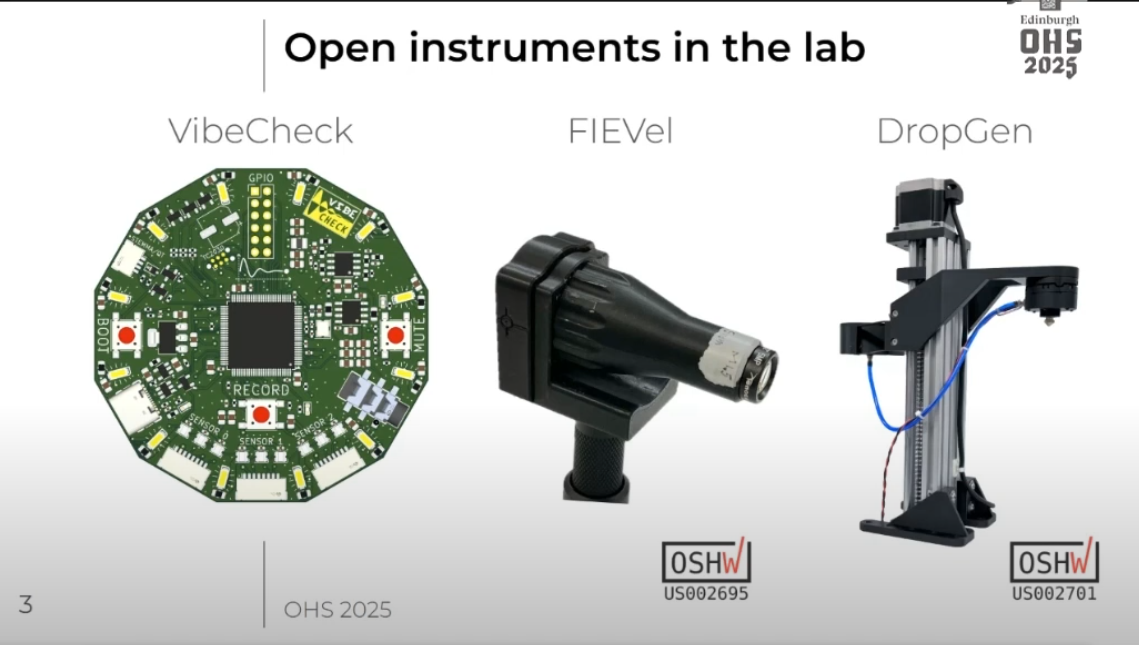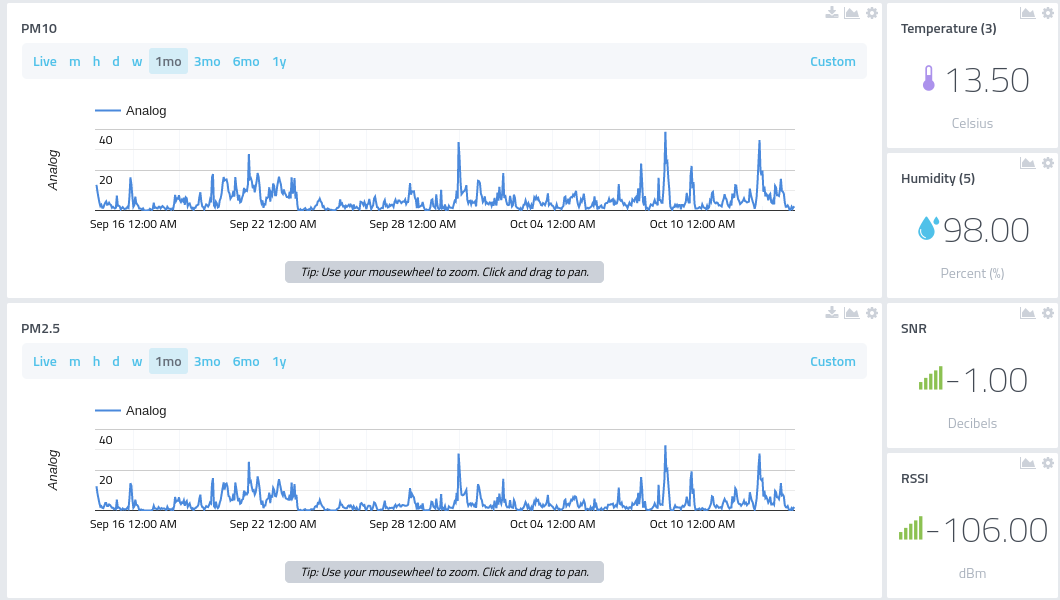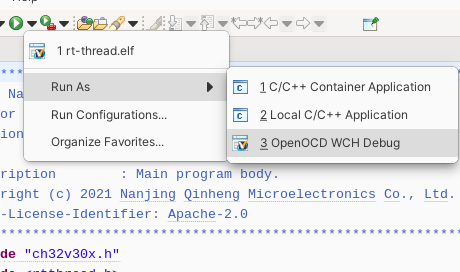Reviving the Spirit of Open Science Hardware: Highlights from the 2025 Open Hardware Summit
Since starting our open science hardware company, LabCrafter, last year, I’ve been reflecting on the current state of open-source hardware. We're long past the heyday of the maker revolution, when it felt like a new open-source hardware project was being launched every minute. Even flagship projects like Prusa 3D printers have gone almost completely closed source, and Opentrons lab automation robots are no longer meaningfully open. On the GOSH (Gathering of Open Science Hardware) forums, the usual excitement and frenzied activity have been subdued lately. Many community biolabs in the UK, like the London Biohackspace and Cambridge Biomakespace, have gone dormant.
It was therefore with great relief when I attended the Open Hardware Summit (OHS) in Edinburgh a couple of weeks ago to see that the scene is still very much alive. Two days packed with amazing talks, engaging panels and hands-on workshops restored my faith in open-source hardware again.
Day 1: Talks
One of the first talks was by Alessia Romani, a postdoc in Joshua Pearce's FAST lab at Western University in Canada. Joshua's lab (previously the MOST research group at Michigan Tech) has long been a driver of open hardware in the scientific community, publishing their work on the Appropredia sustainability wiki and in the Hardware X academic journal (of which Joshua is the editor-in-chief). Alessia's talk introduced RepMat, an open-source materials library focused on circular, sustainable practices. I remember coming across the Institute of Making's materials library at UCL years ago, and I wish I'd asked Alessia how RepMat compares. My understanding is that RepMat's focus is specifically on recycled materials for 3D printing. We use recycled PLA for 3D printing the OpenFlexure microscope kits at LabCrafter, so having more folks focused on recyclable materials is very exciting!
One of the most energetic talks was by Andy Quitmeyer from the Mothbox Project. They developed a low-cost, high-performance insect monitor that uses moths as sensors for biodiversity. The Mothbox has already seen use in the jungles of Panama, and are now working with the Open Science Shop network (of which LabCrafter is a member) to get the latest version manufactured and distributed more widely.
Next up after the snack break I was delighted to learn that the Flow Battery Research Collective (FBRC) have been collaborating with Sanli Faez's group at Utrecht University. FBRC exemplifies how to build open science hardware on the internet, from integrating their forum and blog into the Fediverse, to using open-source platforms like Codeberg and GitBuilding to underpin everything. Sanli made a good case for shared ownership of the commons to achieve broad use, and I hope to see more folks moving in that direction. One of his slides had IBC tanks with flow battery stacks on top, which has interesting similarities with the PioFlo project at AMYBO. Just replace the flow battery stack with an electrolyser stack, and the IBC tanks can become bioreactors for growing hydrogen-oxidizing bacteria.

In a talk on building a spinning machine for biofibres by Eldy Lazaro Vasquez, I loved the use of an open-source syringe pump strapped to a frame and connected to a 3D printer hotend to spin fibres:

They used the biofibres to create woven sensors, like moisture sensors and pressure sensors, by combining gelatin biofibres with conductive threads and using different weaving techniques. The biofibres can easily be dissolved in warm water and you can then recover the conductive thread for recycling or reuse.

I also had the chance to share our latest work at LabCrafter, collaborating with the AMYBO community to grow food with electricity. Here's the full talk:
After lunch I really enjoyed Jerry de Vos and Santosh Ilmparuthi's talk on how they are turning useful projects at TU Delft, that weren't spun out into companies by the technology transfer office, into open hardware projects. It reminded me that universities need more open-source program offices (OSPOs), working not just on open-source software but on hardware as well. One of their slides featured a bioreactor, which reminded me of the UNLOCK Project, a connection I still want to explore further. Jerry also maintains the lovely Awesome Dutch Open Hardware list.
Gabriel Kiarie from the Centre for Data Science and Artificial Intelligence (DSAIL) in Kenya gave an insightful talk on developing low-cost open-source hardware for environmental monitoring in the African context, from bioacoustic sensors and camera traps to river water level monitoring and electric fence fault detectors. They even designed a power supply that gracefully shuts down a Raspberry Pi when the battery voltage in a solar-powered project gets too low, called PiWild.

The next talk by Oliver Child from the University of Bristol explored embedding PCBs into 3D prints. This adorable 3D-printed soil moisture sensor uses both conductive and insulating filaments to form the probes:

I was really excited for the talk about turning sensors into scientific instruments, and Eli Silver from Brown University did not disappoint. At Harris Lab they have developed a whole bunch of open science hardware, including a velocimeter based on an optical mouse sensor and a droplet generator. These are the kind of things we'd love to make available through LabCrafter in the future, so please get in touch if you're interested in these! Eli highlighted three essential pillars in transforming a dev board into a true scientific instrument: calibration, characterization, and user experience.

Day 2: Panels and workshops
Although I didn't get to attend the hands-on workshops, there were some really good panels at this year's OHS. I was blown away by the Open Source Environmental panel by Jo Walsh, Shannon Hicks, Débora Swinstun and Sasha Engelmann.
Jo spoke about her experience as a research software/hardware engineer working for the UK Centre for Ecology & Hydrology. I really like her idea of instrumenting the pond they have on site with sensors and how that can be done thoughtfully. She even gave a surprise shoutout to LabCrafter, GOSH, and OpenFlexure at the end of her talk.

Shannon Hicks from the Stroud Water Research Center introduced us to EnviroDIY, a toolkit of open source hardware and resources for environmental monitoring. They've been running a forum for environmental monitoring since 2014.
They have a river quality monitoring project that covers the tributaries of the Delaware River Basin, as governmental monitoring stations only cover the main river. Through real-time monitoring they can discover things impossible to do with manual monitoring. For example, by looking at conductivity readings when it rains (and most people would do manual monitoring when it's not raining) they discovered grit salt runoffs that impacted the river, including a large salt deposit on a parking lot covered with a tarp that blew off.

They developed the Mayfly, an open-source data logger. It has an add-on socket for accessories like 4G/LTE, WiFi/Bluetooth or an OLED display, but its standout feature is support for commercial sensor probes. By making the Mayfly compatible with calibrated sensor probes that are already known to scientists, they don't have to do the sensor characterization and calibration themselves.
A good takeaway lesson was that a citizen science project needs committed volunteers to manage monitoring stations' ongoing maintenance, whether that's cleaning sensors, troubleshooting or quality control.

Débora Swinstun, an anthropologist from the National University of La Plata in Argentina, and Sasha Engelmann, a geographer at Royal Holloway in London, talked about their collaboration in air quality monitoring in Buenos Aires. Citizen science initiatives can be really challenging in countries like Argentina. For example, not being able to co-locate a sensor with a calibrated monitoring station can be a major obstacle.
The other panel I attended was on open source medical devices, with Anne Coburn and Chris Rexroth from COSMIIC Inc., Scott Smith from Openwater, Lukas Winter from Open Source Imaging Initiative and Rohit Gipta, an engineer from India.
COSMIIC is working on a modular implantable medical device released under open-source licenses. While they're not pursuing regulatory clearance for the general population, they do have an Investigational Device Exemption from the FDA to use it in research studies. They mentioned that spinning out COSMIIC from Case Western University as an open-source company was very challenging, and I think yet another reason for universities to have open source program offices (OSPOs) that also specialize in hardware, not just software. COSMIIC used the CERN-OHL-P-2.0 license for their hardware files, MIT license for their software and CC-BY-4.0 for their documentation. It's encouraging to see companies embracing permissive open licensing so comprehensively.

Scott Smith from Openwater talked about their open-source systems to use infrared and ultrasound for diagnosis and treatment, such as their Pulsed Speckle Contrast Optical Spectrometry (P-SCOS) system, Open Motion. Scott mentioned that 80% of the cost of a developing a new treatment is in clinic trials. The numbers are mind-boggling: more than $1B for drugs, and $50M-$100M for devices.
They use a CC-BY-SA-4.0 license for their hardware, an AGPL license for their software and a patent pledge to allow use of their 68 current and future patents.

Next up was Lukas Winter, who talked about their open-source MRI scanner. They've managed to build a portable system that can take MRI images of someone's head or extremities. With material costs around €30k, it’s far from hobbyist-level, but still orders of magnitude cheaper than commercial MRI systems.

There were lots of other talks and panels that didn't feature open science hardware, so have a look at this playlist on YouTube where all the OHS 2025 talks were made available.
With community biolabs like ASCUS in Edinburgh, LifeFabs in London, Genspace in the US and BioClub Tokyo in Japan still very active, I'm excited for the future of open science. OHS 2025 was a powerful reminder: you can’t just toss a new open-source project onto GitHub or Hackster and expect impact, you have to nurture a community around it.
Comment on this post
















